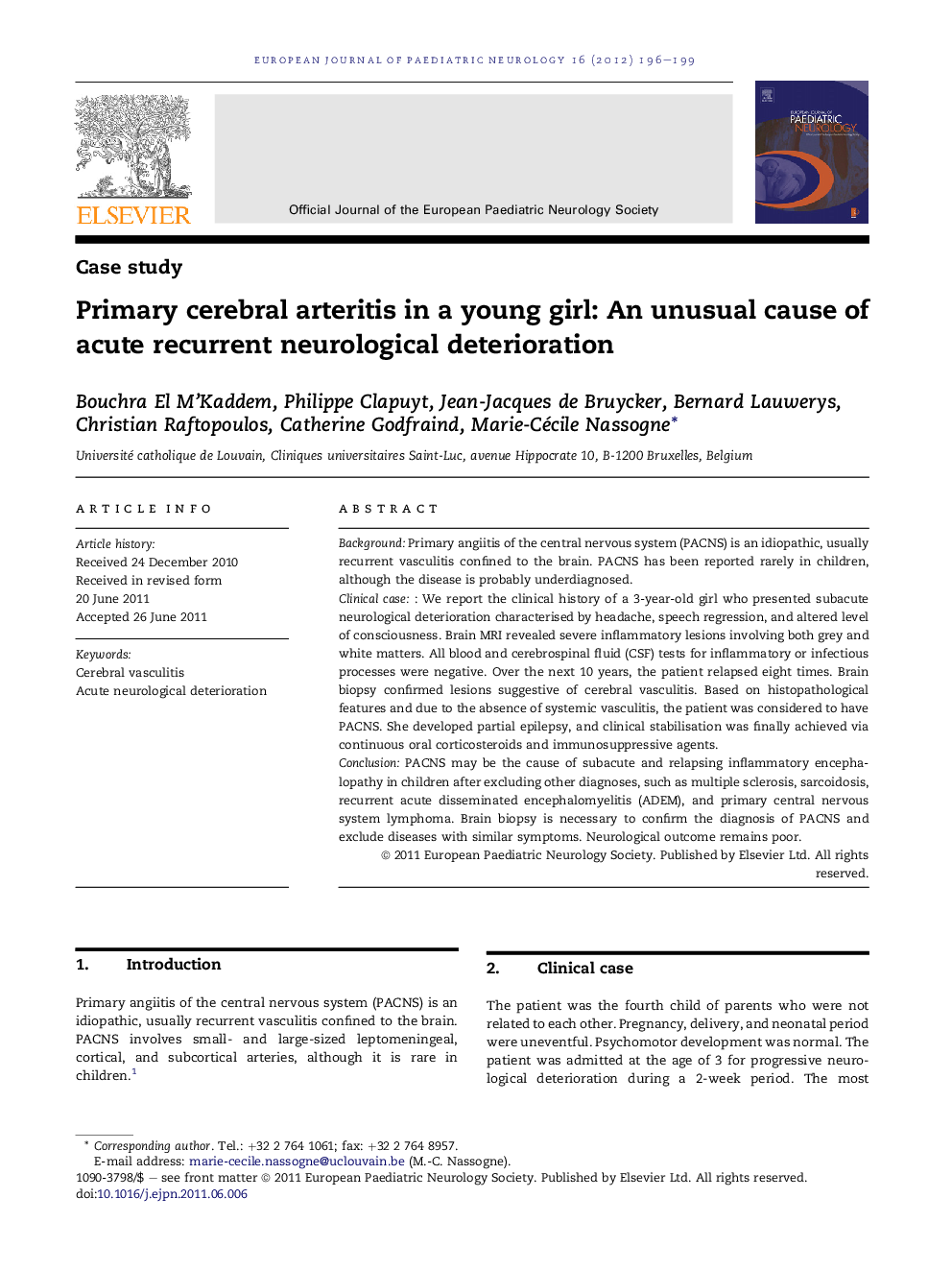| Article ID | Journal | Published Year | Pages | File Type |
|---|---|---|---|---|
| 3054001 | European Journal of Paediatric Neurology | 2012 | 4 Pages |
BackgroundPrimary angiitis of the central nervous system (PACNS) is an idiopathic, usually recurrent vasculitis confined to the brain. PACNS has been reported rarely in children, although the disease is probably underdiagnosed.Clinical case: We report the clinical history of a 3-year-old girl who presented subacute neurological deterioration characterised by headache, speech regression, and altered level of consciousness. Brain MRI revealed severe inflammatory lesions involving both grey and white matters. All blood and cerebrospinal fluid (CSF) tests for inflammatory or infectious processes were negative. Over the next 10 years, the patient relapsed eight times. Brain biopsy confirmed lesions suggestive of cerebral vasculitis. Based on histopathological features and due to the absence of systemic vasculitis, the patient was considered to have PACNS. She developed partial epilepsy, and clinical stabilisation was finally achieved via continuous oral corticosteroids and immunosuppressive agents.ConclusionPACNS may be the cause of subacute and relapsing inflammatory encephalopathy in children after excluding other diagnoses, such as multiple sclerosis, sarcoidosis, recurrent acute disseminated encephalomyelitis (ADEM), and primary central nervous system lymphoma. Brain biopsy is necessary to confirm the diagnosis of PACNS and exclude diseases with similar symptoms. Neurological outcome remains poor.
► We describe a case of childhood PACNS with severe relapsing-remitting course. ► Brain biopsy is important in the cases of unusual evolution of ADEM. ► Think to SVcPACNS in cases of recurrent encephalopathy with white matter involvement. ► Rapid aggressive immunosuppressive therapy is often necessary in SVcPACNS.
